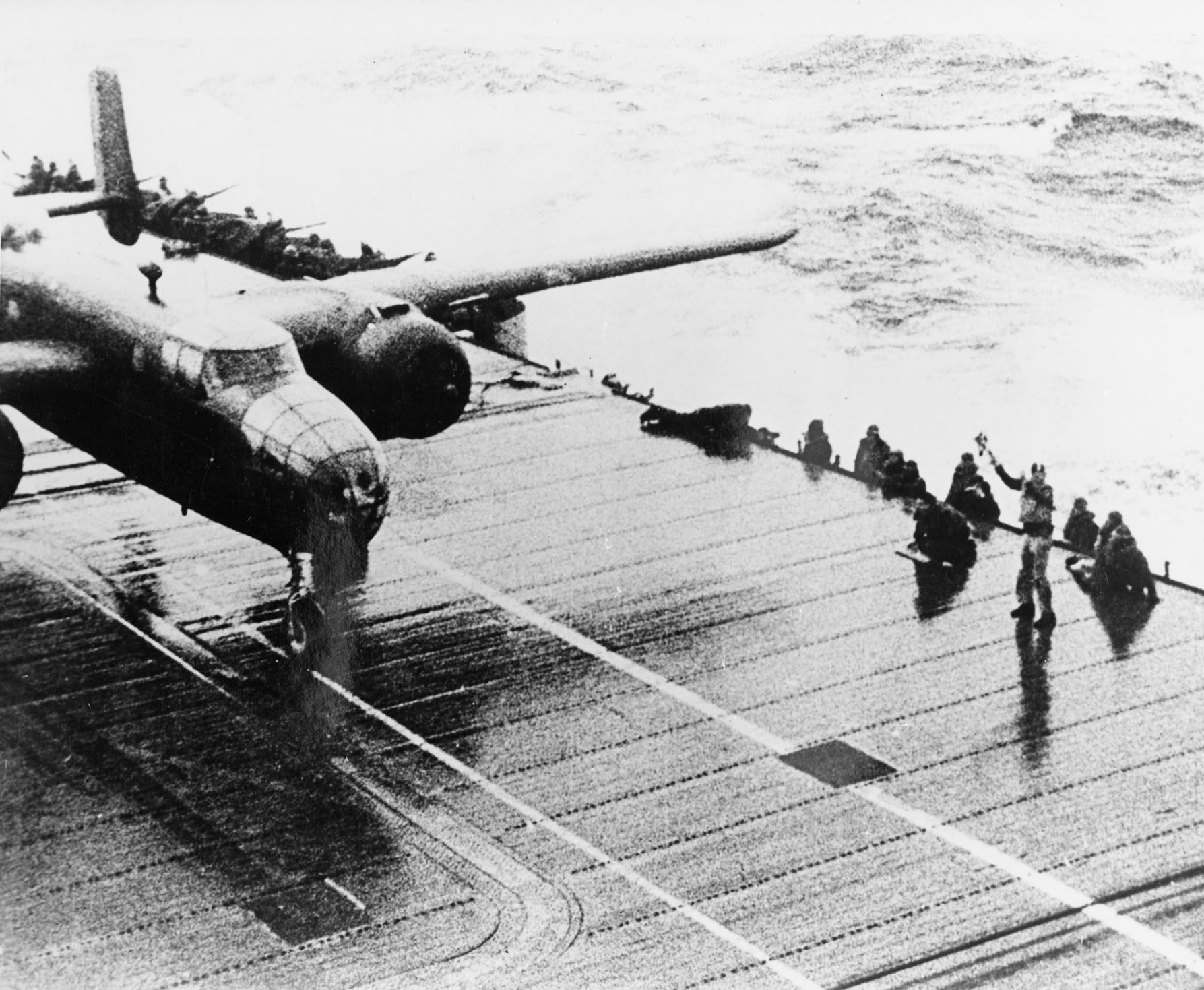
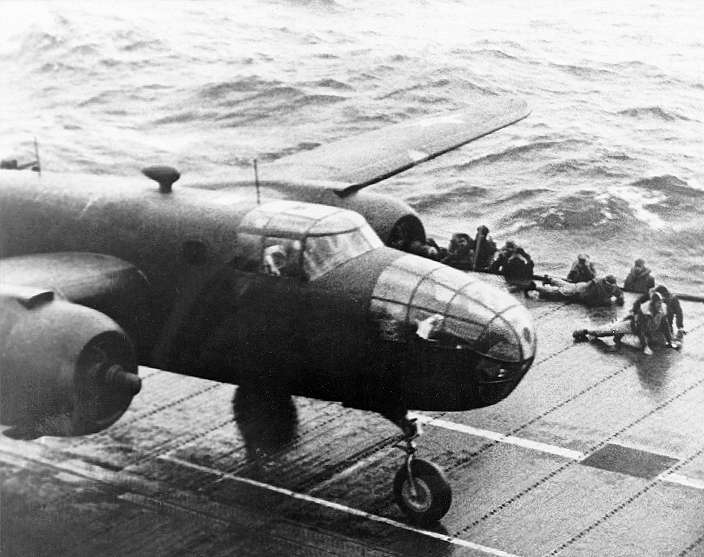
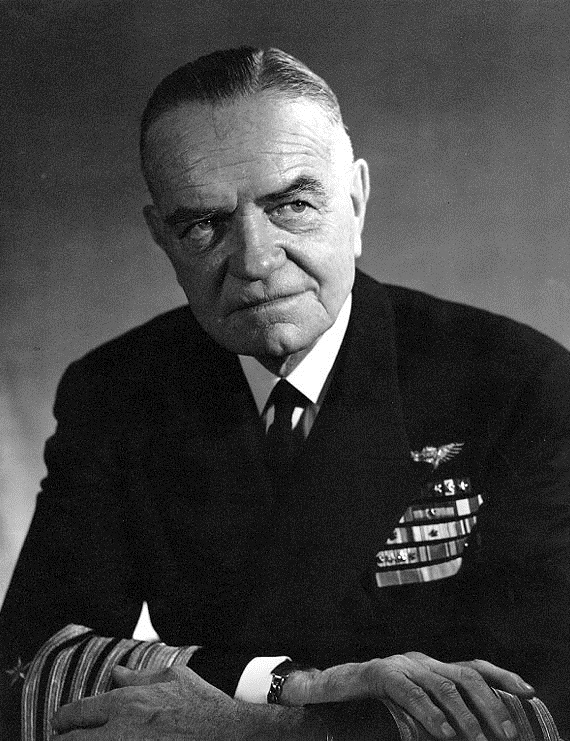
18 April 1942: Task Force 16, under the command of Vice Admiral William F. Halsey, Jr., U.S. Navy, approached the Japanese islands on a daring top secret joint Army-Navy attack.
Planning for the attack began in January 1942 under orders from Admiral Earnest J. King, Commander-in-Chief United States Fleet. Captain Donald B. Duncan, U.S. Navy, was responsible for the plan.
The operation was carried out by Task Force 16 under the command of Vice Admiral William F. Halsey, Jr., United States Navy. Task Force 16 consisted of two aircraft carriers, USS Enterprise (CV-6) and USS Hornet (CV-8), four cruisers, eight destroyers and two oilers. There were two air groups, consisting of eight squadrons of 54 fighters, 72 dive bombers, 36 torpedo bombers, and one squadron of of 16 medium bombers. Lieutenant Colonel James Harold (“Jimmy”) Doolittle, U.S. Army Air Corps, commanded the Strike Group of North American Aviation B-25 Mitchell bombers aboard Hornet.
With the land-based Army bombers secured to Hornet‘s flight deck, her own fighters had been struck below. The air group from Enterprise provided Combat Air Patrol for the task force. The plan was to bring the B-25s within 400 miles (645 kilometers) of Japan, have them take off and carry out the attack, then fly on to airfields in Chinese territory.
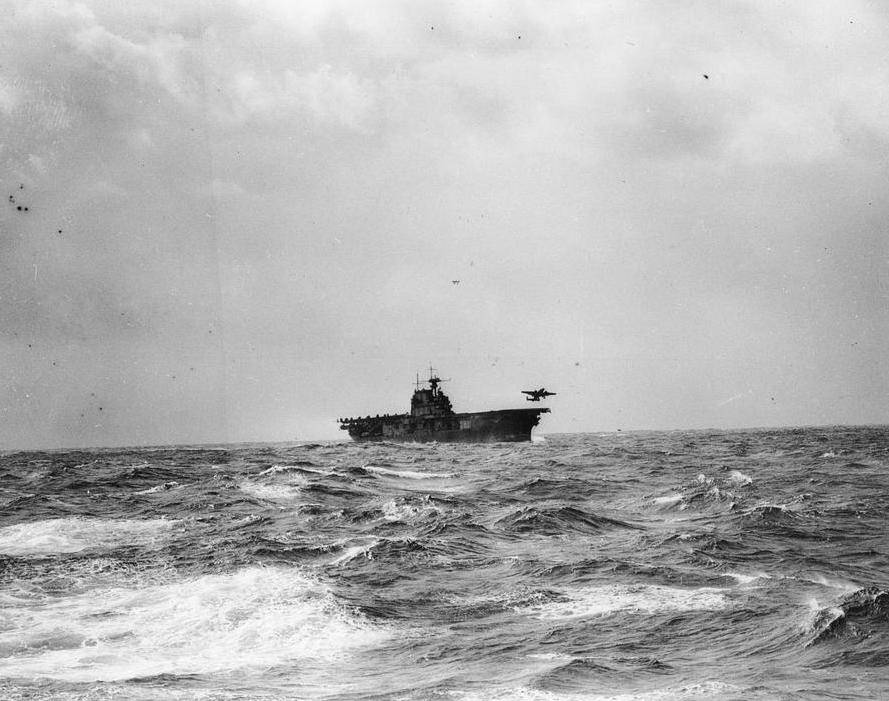
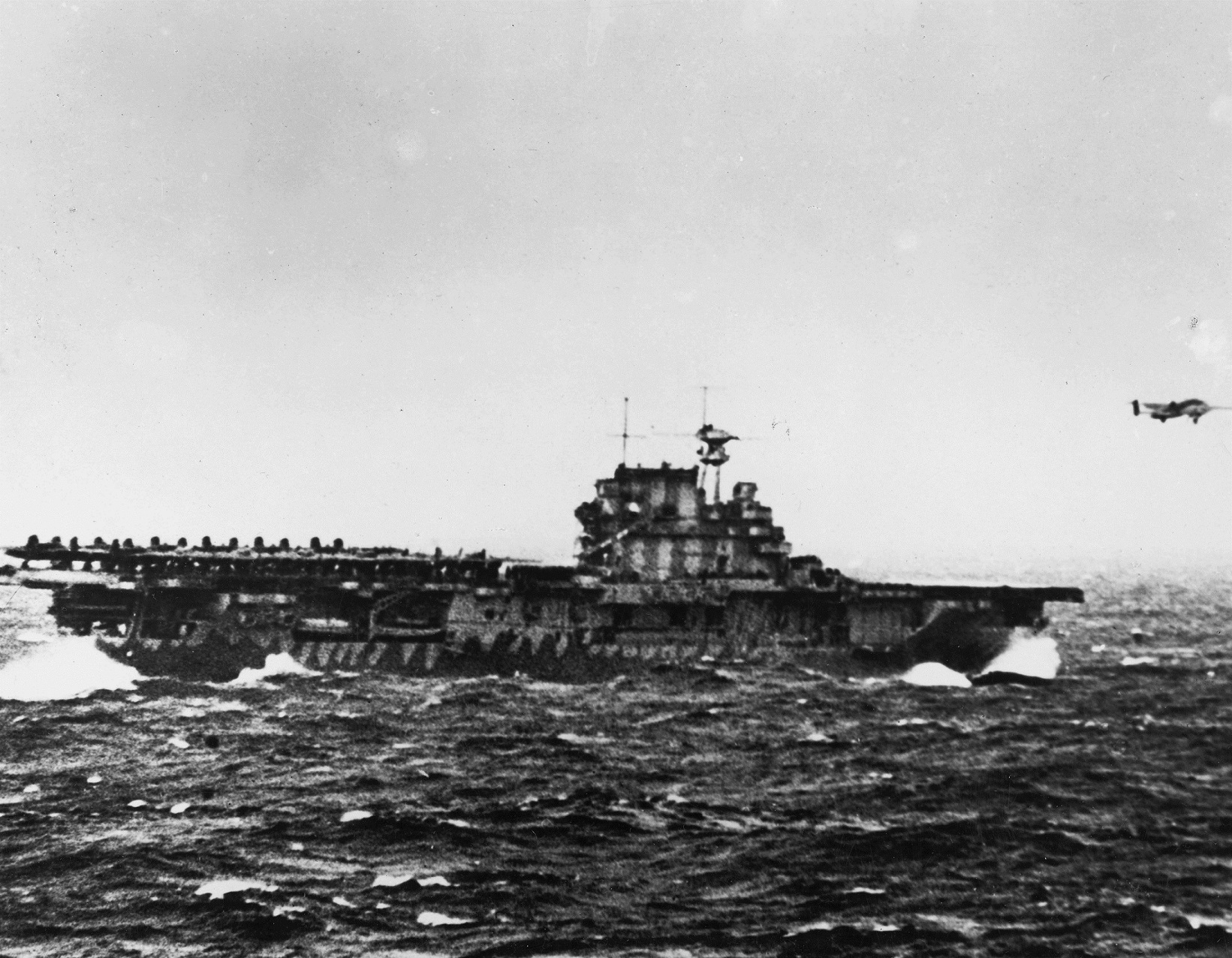
At 0500 hours, the task force was sighted by a Japanese picket boat while still over 700 miles (1,127 kilometers) away from Tokyo. At 0644 another vessel was spotted by the task force. Fearing that surprise had been lost, Admiral Halsey ordered the bombers launched while still 623 miles (1,003 kilometers) from land.
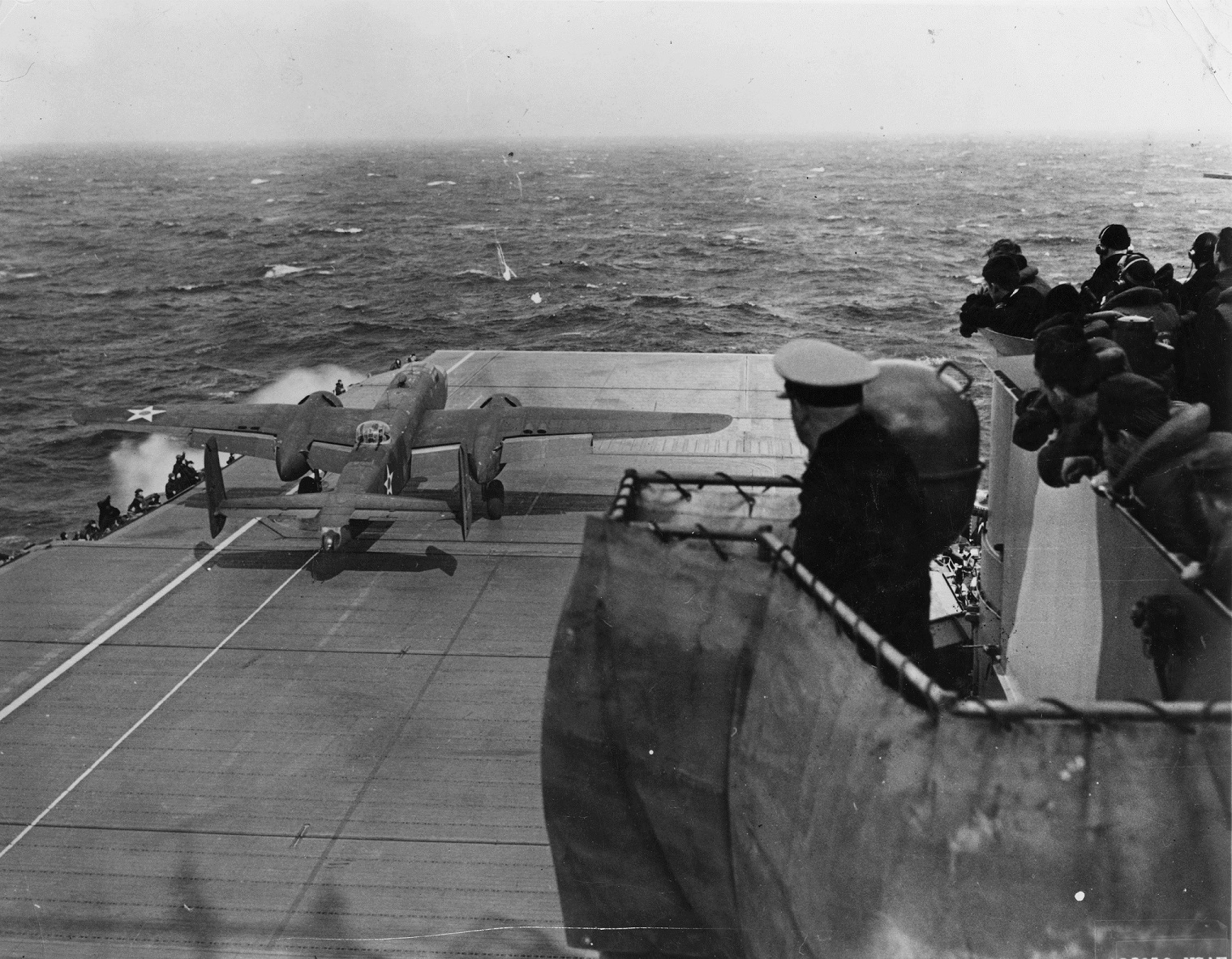
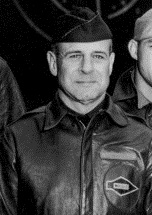
The sixteen B-25s were successfully launched from Hornet and headed for their assigned targets. The lead airplane, B-25B serial number 40-2344, was flown by Lieutenant Colonel Doolittle.
Single B-25s attacked targets in the cities of Tokyo, Nagoya, Osaka and Kobe.The first bombs were dropped on Tokyo at 1215 local time. This was the first offensive operation carried out by the United States of American against the Empire of Japan during World War II.
The actual destructive effect of the attack was minimal. It had been hoped that there would be psychological effects on the citizenry, however the arrival of the American bombers coincided with an ongoing air raid drill, and many thought it was all part of the drill.
Militarily, however, the attack was a stunning success. Four Japanese fighter groups, needed elsewhere, were pinned down at home, waiting for the next attack.
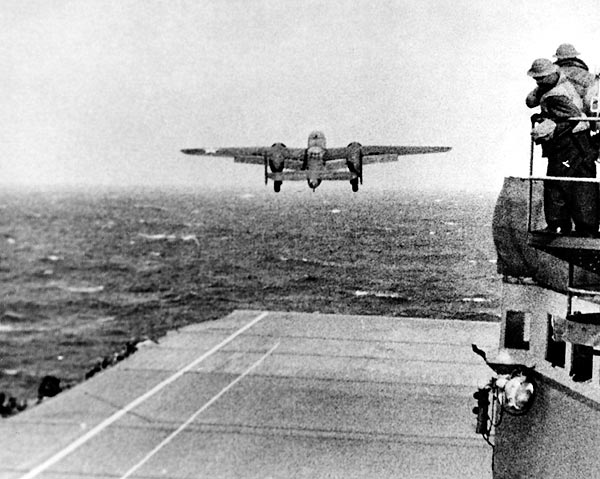
Not a single B-25 was lost over Japan. One landed in Vladivostok where the crew and airplane were interred by the “neutral” Soviets, but they eventually were able to get home. The rest continued on toward China, though without enough fuel to reach their planned destinations. Four B-25s made crash landings, but the crews of the others bailed out into darkness as their planes ran out of gas.
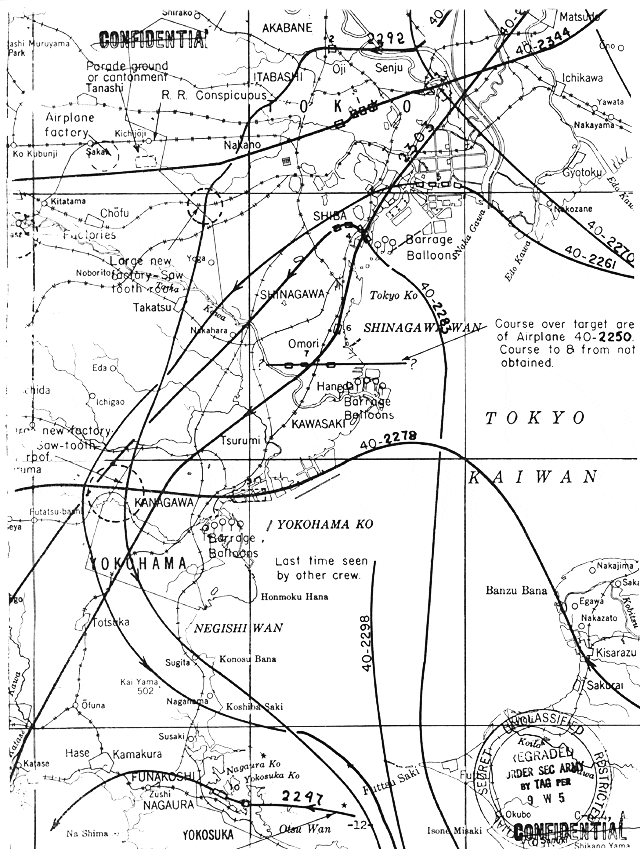
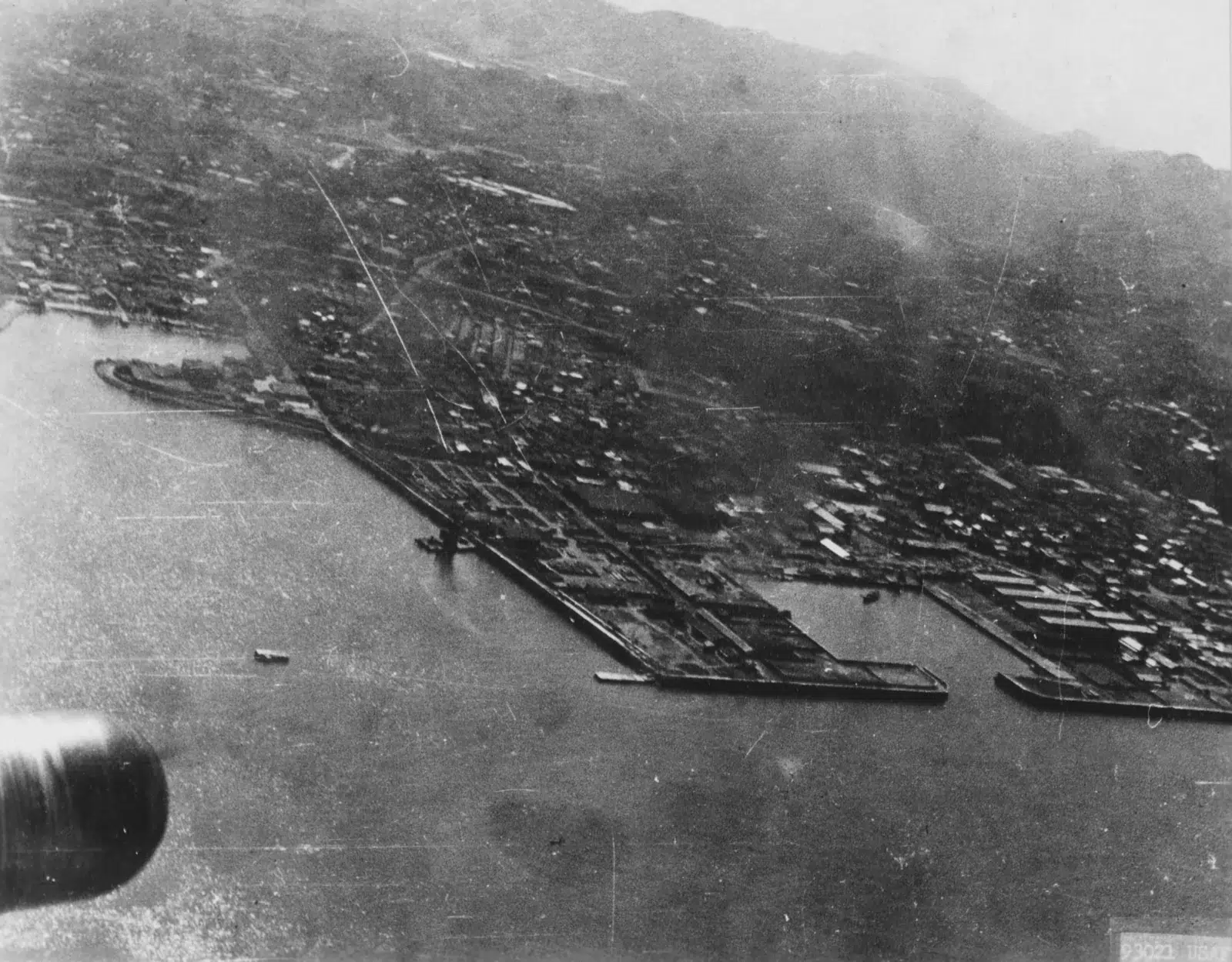

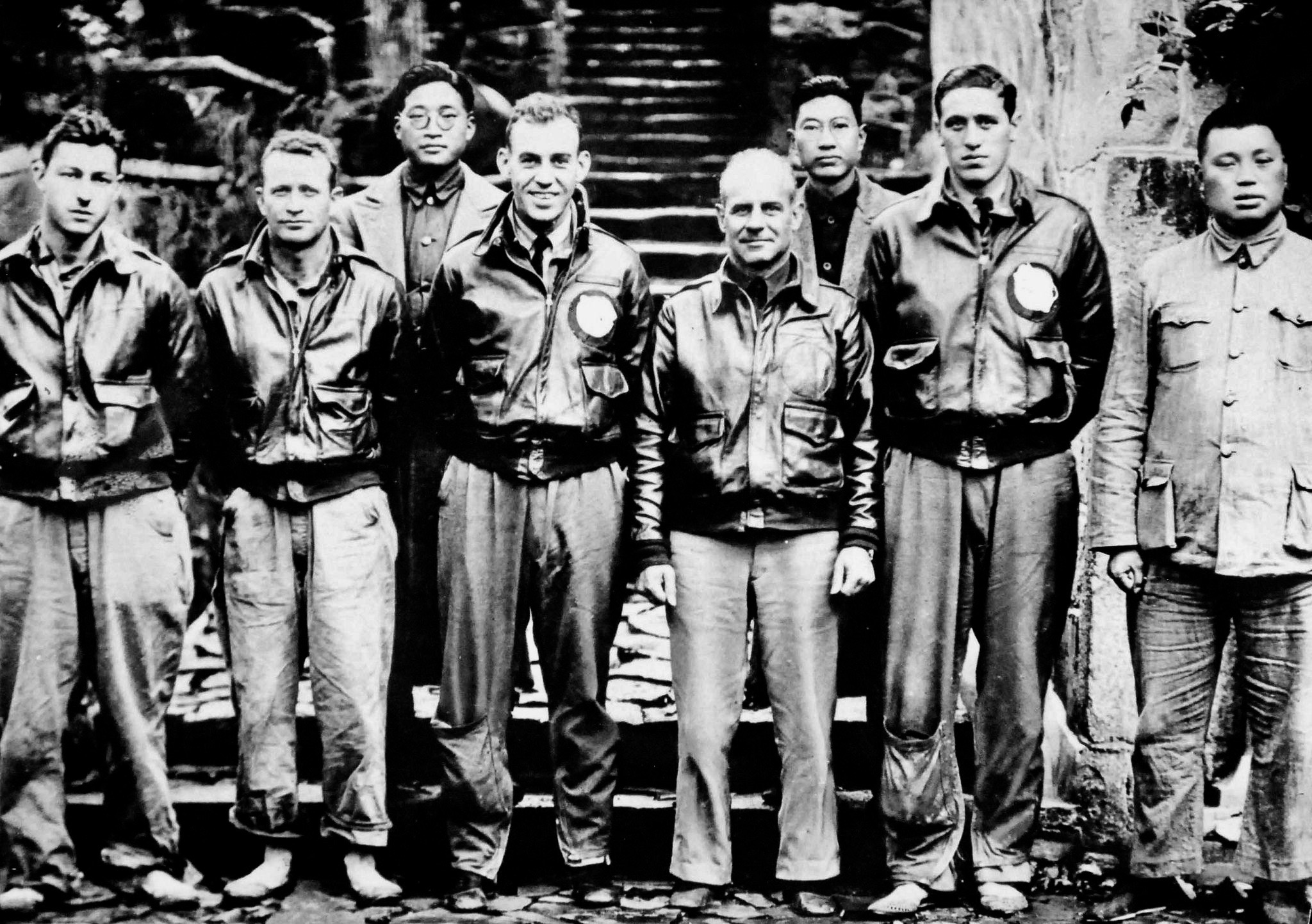
Five of the airmen were killed. Eight were captured by the Japanese, two of whom were executed by a military court, and another died in prison.
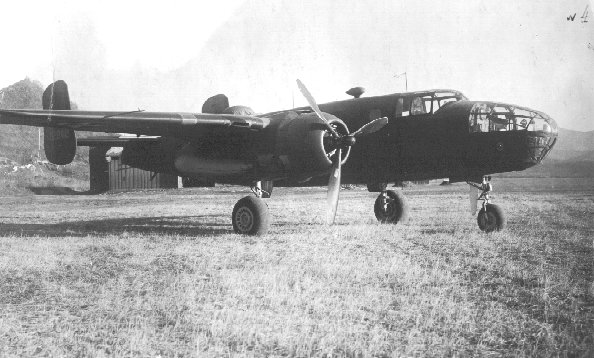
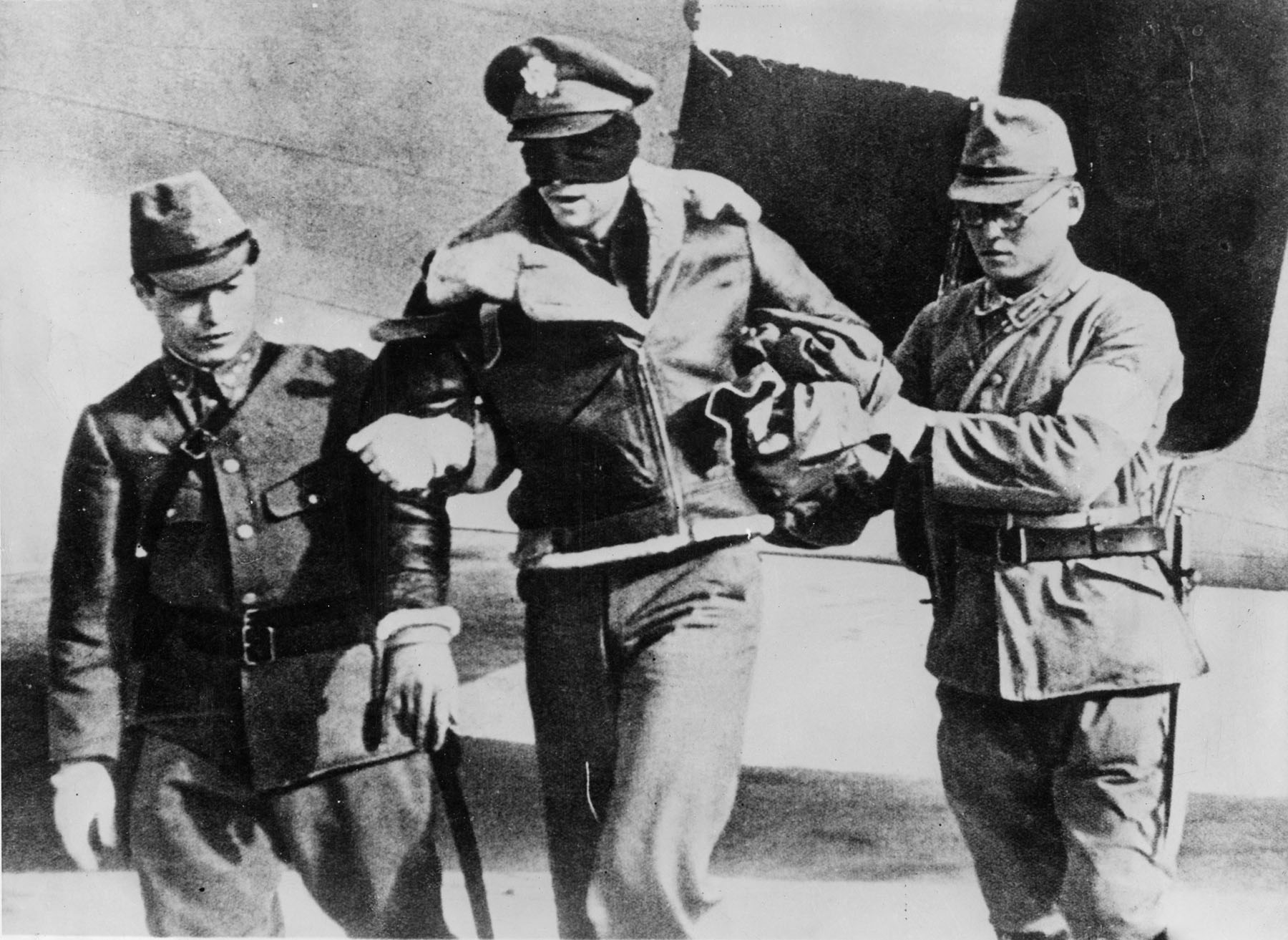
For his leadership in the air raid, James Harold Doolittle was promoted to the rank of Brigadier General, and was awarded the Medal of Honor by President Franklin D. Roosevelt. General Doolittle’s Medal is in the collection of the National Air and Space Museum.
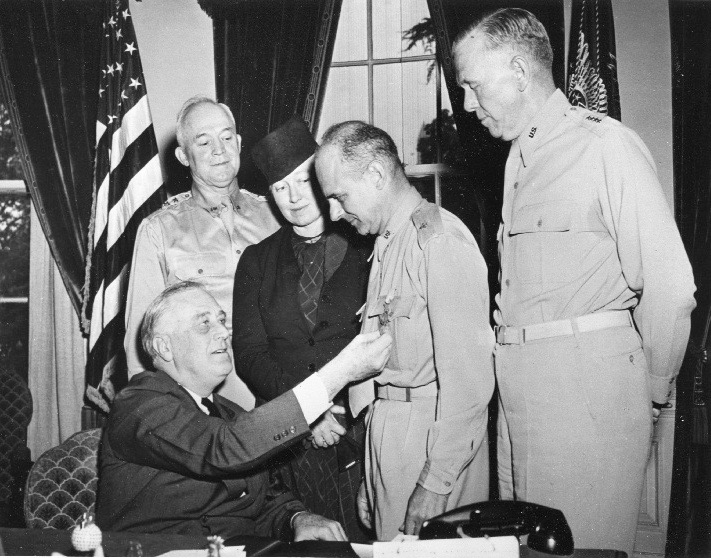
CITATION:
The President of the United States of America, in the name of Congress, takes pleasure in presenting the Medal of Honor to Brigadier General [then Lieutenant Colonel] James Harold Doolittle (ASN: 0-271855), United States Army Air Forces, for conspicuous leadership above the call of duty, involving personal valor and intrepidity at an extreme hazard to life while Commanding the First Special Aviation Project in a bombing raid of Tokyo, Japan, on 18 April 1942. With the apparent certainty of being forced to land in enemy territory or to perish at sea, General Doolittle personally led a squadron of Army bombers, manned by volunteer crews, in a highly destructive raid on the Japanese mainland.
War Department, General Orders No. 29 (June 9, 1942), Amended by Department of the Army G.O. No. 22 (1959) & No. 4 (1960)
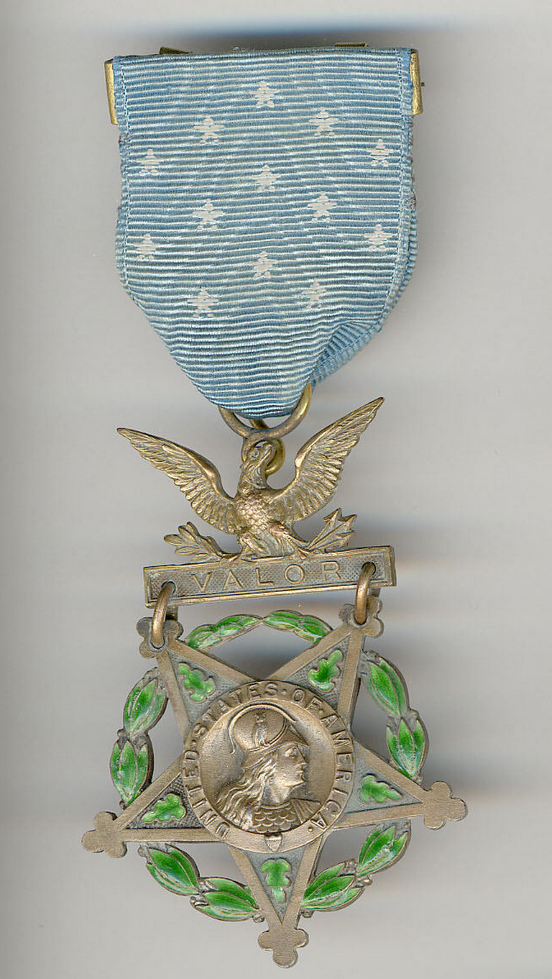
© 2019, Bryan R. Swopes
Great photos.
I love this cite. I use it every week because I am part of the civil air patrol where one of our awards are named after him
Because I am our squadrons historian
Thanks, Raymond. I’m glad that you like it. Tell your friends! 🙂 —Bryan
I read somewhere once that the Russians used the Vladivostok B-29 as a pattern to create a similar model… I wonder whatever happened to the original? I don’t think it was ever returned to the United States…
The raid over Kobe inflicted minimal damage but had maximum effect on both the Japanese and the spirits of the American and Allied interned in prison camp…
The Soviet Union built a variant of the Douglas DC-3—the Lisunov Li-2—under license, and reverse-engineered an interned Boeing B-29 Superfortress as the Tupolev Tu-4. Best story, though, is the reverse-engineered AA-2 Atoll infrared-homing air to air missile: During a limited war between the peoples Republic of China and the Republic of China circa 1958, the RoCAF fired an AIM-9 Sidewinder at a Red Chinese fighter. The missile impacted but did not explodes, and the slightly damaged fighter returned to its base. The live missile was removed and then sent to the Soviet Union where it became the Vympel K-13 (NATO: AA-2 Atoll). The Soviets received nearly a thousand B-25s under lend-lease. I have never heard of a Soviet copy of the B-25, but that doesn’t mean it didn’t happen. Thanks, Mark.
Don’t you mean B-25? It was never found. Walter Kurilchyk of California made an extensive search for it and never found it. Article here: https://www.latimes.com/archives/la-xpm-1996-07-06-me-23557-story.html
The Russians did copy the B-29 Superfortress and there are examples at the Monino Air Museum and also the Beijing Air Museum both of which I have seen. A story I heard at Monino was that when they converted from Imperial to metric (rounding up) for the copies the aircraft gained thousands of pounds.
oops. B-25. I’ve got B-29s on my mind for some reason…
The last surviving member of the Doolittle Raiders was Lt. Col. Richard Cole, who as a young Lt. was Doolittle’s co-pilot in the lead B-25. He died here in San Antonio on 9 April, 2019, aged 103.
My 43rd Bomb Wing commander was Everett W. Holstrom, one of the Tokoyo Raiders.
Minor typo: In the last caption, “the” is misspelled “teh” three times
Thanks!
Actually three Raiders were executed by the Japanese; pilots Lt Hallmark and Lt Farrow and gunner Sgt Spatz.
Great post again, as usual, Bryan! I’ve never seen anything in print about what happened to the Hornet task force after launching the B-25s. Were they actually spotted by the Japanese ships? Did those ships radio back to Japan about the US task force? Even if they were spotted, I doubt the Japanese sailors would’ve realized the Hornet’s deck was full of bombers for an attack on the homeland. I’ve always been of the opinion that the bombers were launched unnecessarily early. Your thoughts?
Thank you, James. The U.S. task force detected the first surface craft by radar at 0310 and turned south. At 0558, a patrolling fighter from Enterprise sighted a small fishing boat. The pilot then reported the boat to Halsey via a message drop, saying that he thought he had been sighted. At about 0738 the picket boat Nitto Maru No. 23 sent a radio signal, “Three enemy carriers sighted. Position 600 nautical miles east of Inubosaki.” USS Nashville engaged that boat with its fifteen six-inch guns, and eight fighters from Enterprise strafed it. According to Target Tokyo by James M. Scott, [W.W. Norton & Company, 2015] at Chapter 10, Page 175, “…radiomen picked up continual transmissions for twenty-seven minutes after the cruiser fired the first shot.” So, yes, the early launch was probably the prudent action. After the final B-25 took off at 0824, the task force “Changed course and axis to 90°, commencing retirement from the area at 25 knots.” Both USS Enterprise and USS Hornet participated in the Battle of Midway and the Solomons Campaign. Hornet was sunk during The Battle of the Santa Cruz Islands, 26 October 1942. 140 of its 2,200 crewmen were lost.
Just finished Dan Hampton’s latest book, Vanishing Act, which deals primary with aircraft 8 of the raid, the aircraft that landed in Russia. As usual , the book is extensively researched and well written, and Hampton makes a compelling argument that Russia was their destination from the beginning. He goes into briefings, maintenance, politics , and the crews eventual “escape”. An excellent read.
It’s pretty amazing that less than 6 months after the Peal Harbor raid, American forces were bombing the Japanese capital city. That should have been a huge wake-up call to the Japanese that they had made a gross error in judgement by attacking Peal Harbor. The Doolittle raid should have been a clear signal to Japan that the war was not going to go well for them.